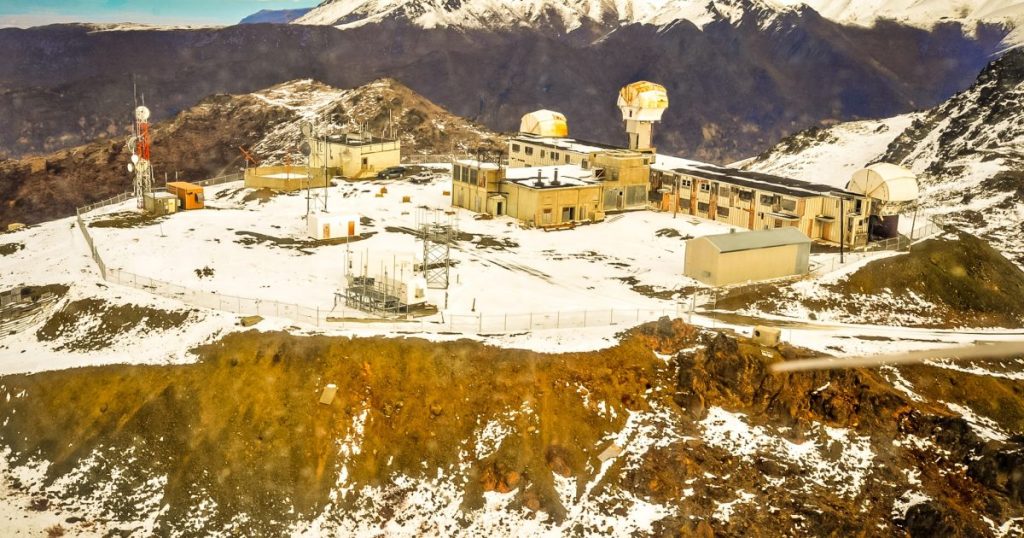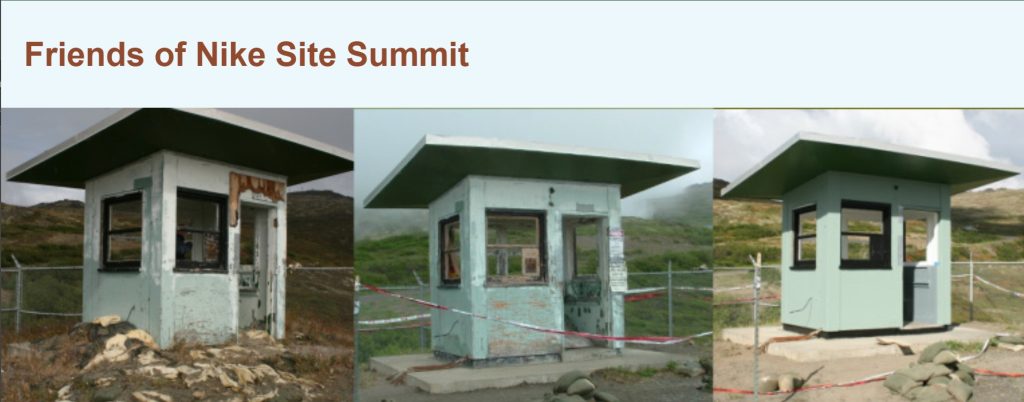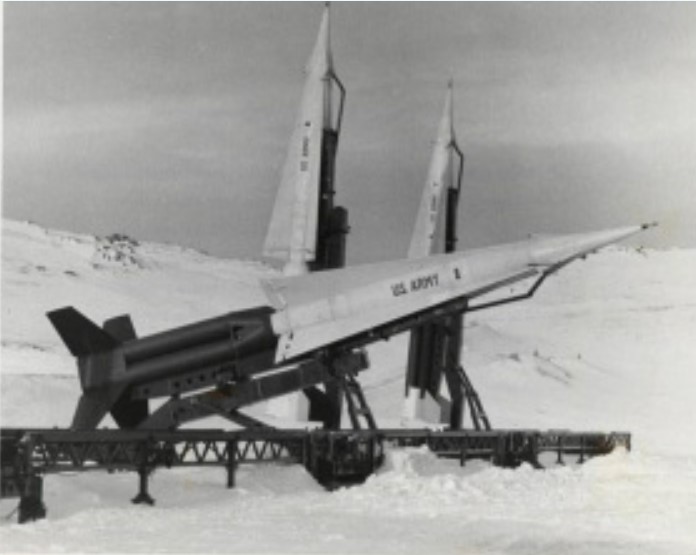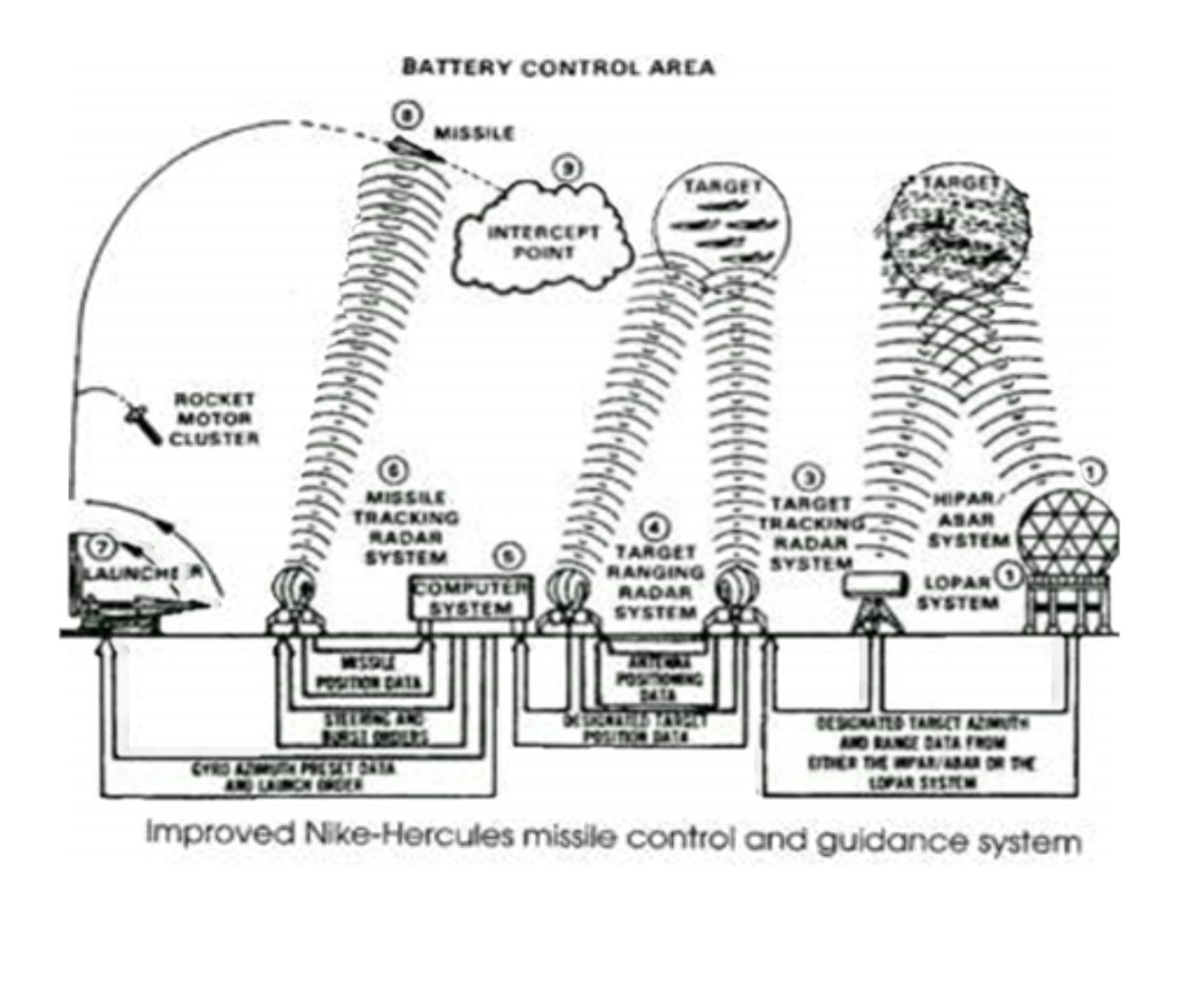
Visible from Anchorage, below the Nike Hercules Missile installation, is a lighted star installed by the military in 1960.
Americans during the 1950s-1960s grew up under the imagined imminent mushroom cloud of the Cold War with the United Soviet Socialist Republics (USSR); a standoff that lasted from the end of World War II until Christmas Day, 1991. On that blessed day the Soviet hammer and sickle flag was lowered from the Kremlin for the last time.
What a relief!
Those of the so-called “baby-boomer generation” who had lived in Alaska during this time understood that our new state was a potential target of the soviets due to its strategic military significance. In my own case, my father brought his family to Alaska specifically so he could work as a civilian contractor in this international drama. We lived in Anchorage while Dad traveled around the state with his work as a telecommunications technician. Anchorage was a bedroom community to Elmendorf AFB and Fort Richardson. We were taught that nuclear rockets were prepared to launch anytime–by direction of the president–from the Nike Hercules Missile installation on Ft. Richardson, just up the road from where we skied in winter and picked berries in the summer, at Arctic Valley.

For background: U.S. Military planners believed the Soviet Union would use strategic bombers to gain a foothold in Alaska to attack other American cities. In response, Nike Hercules missile systems were installed near Anchorage and Fairbanks population centers in 1955. The Arctic Valley Missile Launch and Storage Area sits at the 3,000 foot elevation, approximately 5,000 feet from the Battery Control Area. It comprised the missile launch and storage bunkers, the warhead magazine, and the launch control building. Site Summit stood guard over Anchorage from 1959 to 1979, and one of the men stationed there, Greg Durocher, had plenty of stories to tell during our tour about his experience as a young GI.
Under a military strategy and national security policy of that time known as Mutual Assured Destruction (MAD) Americans understood that a full-scale use of nuclear weapons by two or more opposing sides would cause the complete annihilation of both the attacker and the defender. The two nuclear powers ultimately determined some kind of treaty was necessary, as development of Intercontinental Ballistic Missiles (ICBM) by both sides meant possible delivery of a nuclear payload up to 3,400 miles from launch. This Cold War iceberg began melting when President Richard Nixon and Soviet General Secretary Leonid Brezhnev signed an interim Strategic Arms Limitation Treaty (SALT I) on May 26, 1972, in Moscow. For the first time during the Cold War, the United States and Soviet Union had agreed to limit the number of nuclear missiles in their arsenals.

Succeeding U.S. presidents followed this path to limited armament. At a November 1974 Vladivostok Summit, President Gerald Ford and Brezhnev agreed on the basic framework of a SALT II agreement, including a 2,400 limit on strategic nuclear delivery vehicles (ICBMs, SLBMs, and heavy bombers) for each side; a 1,320 limit on MIRV systems; a ban on new land-based ICBM launchers; and limits on deployment of new types of strategic offensive arms. Ultimately the U.S. also agreed to dismantle the Nike Site network, and affiliated DEW Line and White Alice early warning systems, throughout Alaska. Although SALT II was never signed, both Washington and Moscow subsequently pledged to adhere to the agreement’s terms. President Ronald Reagan, a vehement critic of SALT II during the 1980 presidential campaign, agreed to abide by it until its expiration on December 31, 1985, while he pursued the Strategic Arms Reduction Treaty (START) and argued that research into the Strategic Defense Initiative (SDI) adhered to the 1972 Treaty. By then the Nike Hercules System was obsolete and the Soviet Union collapsed.

Perhaps it was due to relief from no longer having a MAD policy deciding our future as humans in Alaska that the Nike Site Summit above Anchorage was allowed to become derelict. The Fairbanks site is gone and other sites at Kincaid Park and across Knik Arm at Goose Bay, are re-purposed, making this the last intact Nike Hercules Missile installation in Alaska. Here was a self-contained military facility designed to be independent of any outside resources for up to 30 days, that suddenly had no meaningful purpose.
You might ask: Since few today seem to care or understand the lessons of our history, why bother to maintain or even restore such a relic? How about honorable Alaskan recognition of the service of those who understood implementation of the system could mean their certain annihilation?
Suffering from neglect, vandalism and the elements from 1979 to 2009–even while listed on the National Register of Historic Places–the U.S. Army sought a partnership with the organization Friends Of Nike Site Summit (FONSS) to preserve and interpret the site as a monument to those who served during the Cold War. Our FONSS tour following a dinner at the Arctic Valley Ski Lodge was exactly the kind of exhilarating sunny summer evening experience one who has lived here for decades can appreciate: They just don’t make missile launch sites like that one anymore!
Led by NONSS past president, Jim Renkert, we were shuttled around to the various remaining structures, and concrete pads where buildings once stood, and saw what some 4,000 hours of volunteer elbow grease and ingenuity with scarce resources could do. Having lived on a White Alice Site with my family as a youth, the massive bulkhead structures and panels of gauges (now mostly gone) were familiar. Employee families only went on the sites for special occasions, like Christmas, but I was the kind of kid who was curious and snooped around anyway.
In partnership with the Army, FONSS seeks participation from others who already value the lessons of history, OR those who have not yet considered the significance of sacrifice and commitment by noble Americans who continue to contribute to the comforts and protections now taken for granted by many in our modern society.
SUMMER 2022 TOURS HAVE BEEN COMPLETED
To be added to the e-mail notification list for future tours, please e-mail fonss2007@gmail.com and ask to be added to the list.

Very interesting Donn . I love how you sleuth . Born n raised in Anchorage . Lived in Muldoon from 4 th grade to East High graduation 1969. The Nike site always up front and for me a feeling of safety .
Thanks Randi!
Having lived on a White Alice site in Yakutat, it was interesting to take this tour and see the installation as I remembered seeing it during Christmas Holiday when the site was opened up for families to visit. This is one of the older stories on my website and I am going to try to bring more of these up to date.
Don:
Enjoyed your article on Site Summit. You may be interested in reading my article on NIKE sites in Alaska during the Cold War.
By the way, there were 5 NIKE sites in Fairbanks, for a total of 9 in Alaska.
I’d be happy to send you my article. Let me know your Email so I can forward it to you.
Bob Raichle